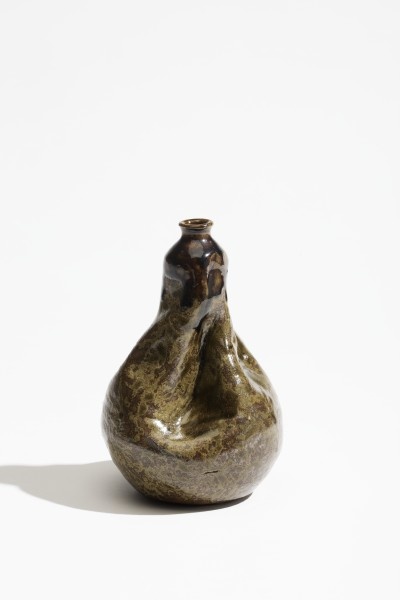Mit der in vielfältigen Formen in keramischen Materialien gefertigten Sakeflasche (tokkuri) wird je nach Jahreszeit kalter oder warmer Reiswein (Sake) serviert. Auch in der Teezeremonie verwendet man den "tokkuri": Während des Tee-Mahles (kaiseki) schenkt der Gastgeber seinen Gästen Sake ein; vor dem letzten Gang trinkt er dann gemeinsam mit ihnen aus Freude über die Teezusammenkunft. Die Sakeflasche erscheint im Zusammenspiel von bewusster Verformung des Drehstücks und seiner glänzend glasierten Oberfläche bewegt und vollendet zugleich. Die Wertschätzung der Japaner für asymmetrische Verformungen wurde in Europa zuerst besonders von französischen Keramikern des 19. Jahrhunderts nachvollzogen. (Text: Christine Klenke)
Schenkung aus der Sammlung M. und G. Czichon, 2009.
en

